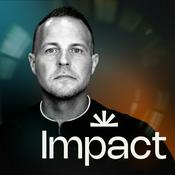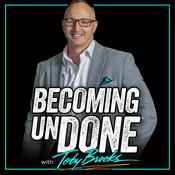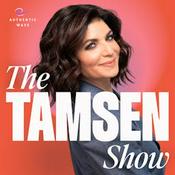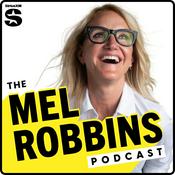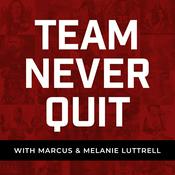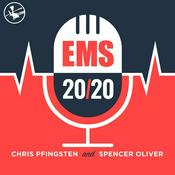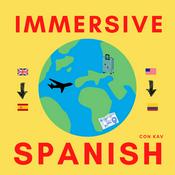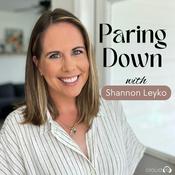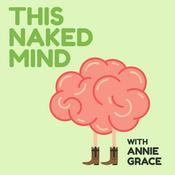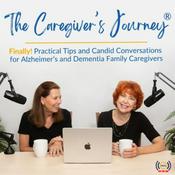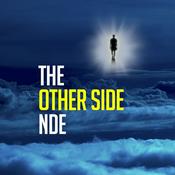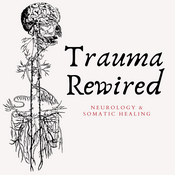105 episodes

Neuropalliative Care in Severe Acute Brain Injury and Stroke With Dr. Claire Creutzfeldt
12/24/2025 | 21 mins.
Severe acute brain injury presents acute and longitudinal challenges. Addressing total pain involves managing physical symptoms and providing emotional, social, and spiritual support to enhance quality of life for patients and their families. In this episode, Kait Nevel, MD, speaks with Claire J. Creutzfeldt, MD, author of the article "Neuropalliative Care in Severe Acute Brain Injury and Stroke" in the Continuum® December 2025 Neuropalliative Care issue. Dr. Nevel is a Continuum® Audio interviewer and a neurologist and neuro-oncologist at Indiana University School of Medicine in Indianapolis, Indiana. Dr. Liewluck is a professor in the department of neurology at the University of Washington in Seattle, Washington. Additional Resources Read the article: Neuropalliative Care in Severe Acute Brain Injury and Stroke With Dr. Claire Creutzfeldt Subscribe to Continuum®: shop.lww.com/Continuum Earn CME (available only to AAN members): continpub.com/AudioCME Continuum® Aloud (verbatim audio-book style recordings of articles available only to Continuum® subscribers): continpub.com/Aloud More about the American Academy of Neurology: aan.com Social Media facebook.com/continuumcme @ContinuumAAN Host: @IUneurodocmom Guest: @cj_creutzfeldt Full episode transcript available here Dr Jones: This is Dr Lyell Jones, Editor-in-Chief of Continuum. Thank you for listening to Continuum Audio. Be sure to visit the links in the episode notes for information about earning CME, subscribing to the journal, and exclusive access to interviews not featured on the podcast. Dr Nevel: Hello, this is Dr Kait Nevel. Today I'm interviewing Dr Claire Creutzfeldt about her article on neuropalliative care in severe acute brain injury and stroke, which appears in the December 2025 Continuum issue on neuropalliative care. Claire, welcome to the podcast, and please introduce yourself to the audience. Dr Creutzfeldt: Thanks, thanks for having me. Yeah, I'm an associate professor of neurology at the University of Washington. I'm a stroke neurologist and palliative care researcher and really have focused my career on how we can best integrate palliative care principles into the care of patients with severe stroke and other neurocritical illness. Dr Nevel: Wonderful. Well, I'm looking forward to talking to you today about your excellent article that I really enjoyed reading. To get us started, can you tell us what you feel is the most important takeaway from your article for the practicing neurologist? Dr Creutzfeldt: Yeah. You know, I think one is always a little biased by what one is working on currently. And I think what I'm most excited about or feel more strongly about is this idea that stroke and severe acute brain injury are not an event, but really a chronic illness that people are left with usually for the rest of their lives, that change their life radically. And I think that education, research funding, also the clinical setting, current healthcare models aren't set up for that. And this idea that severe acute brain injury, you know, should be viewed as a lifelong condition that requires support across all ranges of goals of care. So curative, restorative, palliative and end-of-life care. Dr Nevel: Yeah, I love that part of your article, how you really highlighted that concept. And I think obviously that's something that we see in neurology and learn, especially as we transition out of our residency stages. But I think especially for the trainees listening, can sometimes be hospital inpatient-heavy, if you will, that kind of you can lose sight of that, that these acute strokes, severe acute brain injury, it turns into a chronic illness or condition that patients are dealing with lifelong. Dr Creutzfeldt: Often what we do in a very acute setting is like, is really cool and sexy and like, we can cure people from their stroke if they come, you know, at the right time with the right kind of stroke to the right hospital. And often the symptoms that people come in with much later on are harder to treat and address, partly because the focus in education, clinical and research just hasn't been as much on that time. Dr Nevel: Yeah, absolutely. So, can you talk to us about this concept of total pain? What does it mean, and how do we incorporate this concept into the way that we view our approach, our patient care? Dr Creutzfeldt: Total pain is a very old word, but it's sort of coming back into fashion in the palliative care world because it really describes all those sources of suffering or sources of distress, like, beyond what we sort of really think of as sort of the physical symptoms in recovery of stroke. As many of you know, palliative care often thinks in this multidimensional way of the physical distress, physical pain, but also psychological, emotional, social and spiritual, existential. And both- we sort of created sort of a figure that incorporates all of them and also includes both patients and their family members. They share some of these sources of distress, but they also have distinct ones that need to be addressed. And at the core of that total pain is what we need to provide, is sort of optimal communication and goals-of-care prognosis. Dr Nevel: Yeah, I'm thinking about all of those aspects and not just focusing on one. How does the disease trajectory of severe acute brain injury and stroke play a role in the palliative care approach? And how should we kind of going back to that original point of this idea of severe acute brain injury being an acute event and then oftentimes turning into kind of a chronic condition? How does that play a role in how we address palliative care with our patients, or kind of the stages of palliative care with our patients? Dr Creutzfeldt: Yeah, I think several things, especially for neurologists, is the more traditional palliative care illnesses, like cancer or congestive heart failure, illnesses where people are diagnosed when they're still functioning at a relatively high level and tend to have time to consider their prognosis and their goals of care in the end of life wishes and to meet with palliative care and to consider their personhood. Who am I? What's most important for me? And stroke, people with stroke, they not only present at their worst, they meet us at their worst, at a time when the patient themselves usually can't speak for themselves, when their personhood has been stripped from them. And then as providers, we, you know, we often really just get that one opportunity to get the conversation right and to guide people towards, you know, what we would call optimal and goal-concordant care. So, the challenges are many. I do think that the burden of these early conversations is on neurologists and really requires the neurologists to show compassion, to learn communication skills, think really hard about how you want to communicate prognosis and goals of care early on, because it's going to color people's experiences and decisions longitudinally. You asked about, sort of, this trajectory. And I do think it's important to think about, you know, what really happens even after the thrombectomy or even after we discharge people, especially from the ICU. Because for us, often after sort of day five or six, you know, we're sort of done. We're thinking about secondary stroke prevention. And, you know, how do I get the patient to rehab or out of the hospital? For the patients and families, this is when it really all just starts. You know, this is when they- when they're first memories are usually, you know, they hardly remember that acute setting. And so, when they are medically stable, we're done with the acute blood pressure treatment where we've removed the Foley, we've made a decision about nutrition. For us that tends to be a time where we let go a little; for patients and families that tends to actually be the time when they have to think about how am I going to live with this and what are the next several months or years going to look like? And so being there for them is important. Dr Nevel: That's such a, I think, important point, that when we have our plan in place, we know medically what the plan is for that patient and we're starting to step back, think about rehab or discharge. That's when oftentimes more quote-unquote "reality" steps in for patients and families about what their future is going to look like. Dr Creutzfeldt: And medical stability is not even close to neurological stability. And so, they are still in the middle of real prognostic uncertainty, and often waxing and waning symptoms or new symptoms coming up for them. Like pain, you know, post thalamic pain syndrome, just as an example, tends to be something that doesn't develop until later. Dr Nevel: Right, right. Absolutely. And since you touched on this concept of prognostic uncertainty, and, you know, that's something that's so challenging in severe acute brain injury, especially the early days when you talk about this, you know, that things tend to become a little bit more certain as more time passes. But these are really hard conversations because a lot of times feel like big decisions that need to be made early on, you know? Dr Creutzfeldt: Huge! Dr Nevel: Sometimes things like trach and PEG and things like that. How do you approach that conversation? I know you talk about that a little bit in your article. You touch on that, some of the, kind of, strategies or concepts that we use in palliative care to approach this prognostic uncertainty with patients. Dr Creutzfeldt: Yeah, I think the challenge is to balance this acknowledging uncertainty with still being able to guide the families and allow them to trust you. So, there are a few things that I have said in the past, and I have taught in the past, and I don't use anymore. They include sentences like I don't have a crystal ball, for example. Nobody was asking you for one. The other one that I want us to avoid, I think, is the sentence we are terrible at prognosticating. Because what I have seen is that that sentence carries on for families. And families at nine months are still saying, well, you guys are terrible at prognosticating. That's what you told me. First of all, it's all relative, and relative to non-neural providers---even at this time using Google and AI, we're actually quite good at prognosticating. It's just that a wide range early on. So that's how I would change that sentence is, early on after stroke, the range of possible outcomes is still very wide. And so, you've communicated uncertainty without saying I have no idea what I'm doing, which is not true. That is in order to help families be able to trust you and also to trust the person who comes after you, because we all know that a week or two after admission, we do know a lot more. And if we told them on day one that we're terrible at prognosticating, it's hard to sort of build that trust again later. You also asked about, you know, communication strategies. And I think it's this range of possible outcomes that I think is a good guideline for us to work on. And that range, sort of like a confidence interval, is still very wide early on. And as we collect more information over time, both about the clinical scenario that is evolving in front of us and about the patient who we are learning more about over time, this confidence interval becomes smaller. And that's where this idea of the best case/worst case scenario sort of conversation, for example, comes from: that range of possible outcomes. Dr Nevel: So, what to you is most challenging about palliative care for patients with severe acute brain injury and stroke? Dr Creutzfeldt: I think the biggest challenge in stroke care is balancing restorative and curative care with palliative and end-of-life. And that is especially early on when sort of everything is possible, when patients and families want to hear the good news and, I think, are also quite willing to hear the bad news, and probably should. So, I think that that communication is hard when, you know, really we want to provide goal-concordant care. We want to make sure that people get that care that is most important to them and can meet the outcomes that are most important to them. Dr Nevel: Yeah, agree. What is most rewarding? Dr Creutzfeldt: I think these patients and families have enormous needs and are extremely grateful if they can find someone that they can trust and who can guide them and who will stick with them. And when I say someone, I think that can be a team. That always depends on how we communicate. In the ideal world, it would be the same person following someone over time, the patient and the family over time. But in our current healthcare system, we're usually moving on from one place to another and being able to communicate with the people that come after you. Telling the family that you're a team and supporting them through that, I think, is really important. Dr Nevel: Yeah. And like you touched upon, patients and families, I think oftentimes they're looking for, you mentioned, you know, the sharing and communication and they're looking for information. Dr Creutzfeldt: You know, what's really rewarding is working with a team. And health care has really excelled at that. And I think we have a lot done from them is that it's not always the MD that family needs. And we have a lot of people at our side, and I think we need more of them. Chaplains, social workers; psychologists, actually, I think; and nurses or- in an ideal world, would really work together to support these multidisciplinary, multidimensional symptoms. Dr Nevel: Yeah. I think it benefits both the patient and the care team, too. Dr Creutzfeldt: Absolutely! Dr Nevel: It's helpful to be part of a team. You know, there's camaraderie in that and, like, a shared goal, and I think the thought is rewarding, too. Dr Creutzfeldt: If we really try and think about severe stroke as a chronic illness or severe acute brain injury as a chronic illness not unlike cancer, then if you think about the systems that have been built for cancer where an entire team of providers follows the patient and their family member over time, I think we need that, too. Dr Nevel: Yeah, I agree. That point, every member of the team has overlapping things, but has a slightly individual role to a degree too, which is also helpful to the patient and the family. You talked about this a little bit in your article, and I want to hear more from you about what we know about healthcare disparities in this area of medicine and in providing palliative care for patients with severe acute brain injury and stroke. Dr Creutzfeldt: Yeah, I think actually a lot of the huge decisions that we make, especially early on, are highly variable. And can identify people by various things, whether it's their race or ethnicity or sex or age, or even where they live in the United States. But decisions tend to be made differently. And so, just as an example, we know that I think people who identify as black, for sure, are less likely to receive the acute, often life-saving interventions like TNK or thrombectomy and more likely to undergo longer-term, life-prolonging treatment like PEG and trach. That seems true, after adjusting for clinical severity and things like that. And so disparities like that may be based on cultural preferences or well-informed decisions, and then we can support them. But of course, unfortunately there's a clear idea when we see, often, unexplained variability that a lot is due to uninformed decisions and poor communication and possibly racism in certain parts. And that is, of course, something that has to be addressed. Dr Nevel: Yeah, absolutely. What are future areas of research in this area? I know you do a lot of research in this area and I'd love to hear about some of it and what you think is exciting or kind of new and going to change the way we think about things, perhaps. Dr Creutzfeldt: I think every aspect of stroke continues to be exciting and just, you know, our focus of today and my research is on palliative care. I mean, obviously, the things we can do in rehab these days have to be embraced, and the acute stuff. But I think this longitudinal support, an ideally longitudinal multidisciplinary support for patients and families, requires more research. I think it will help us with prognosis. It will help us with communicating things early on and learning more about sort of multidimensional symptoms of these patients over time. That requires more research. And then, how can we change the healthcare system---in a sustainable way, obviously---to maximize quality of life for the survivors and their families? Dr Nevel: Going back to that total pain again, making sure that we're incorporating that longitudinally. Dr Creutzfeldt: I think there are currently 94 million people worldwide living with the aftermath of a stroke. I joined a stroke survivor support group recently. People are supporting each other that have that had their stroke, like, 14 years ago and are still in that just to show that this is not one and done. People are still struggling with symptoms afterwards and want support. Dr Nevel: Before we close out, is there anything else that you'd like to add? Dr Creutzfeldt: Your questions have all been great, and I think one observation is that we've talked a lot about, sort of, new ideas of the need for longitudinal care for patients after severe stroke. There's still a ton for all of us to do to optimize the care we provide in the very acute setting, to optimize the way we communicate in the very acute setting. To make sure we are, for example, providing the same message as our team members and providing truly compassionate goal-concordant care from the time they hit the emergency room throughout. Including time-limited trials, for example. Dr Nevel: Well, thank you so much for chatting with me today about your article on this really important topic. Again, today I've been interviewing Dr Claire Creutzfeldt about her article on neuropalliative care in severe acute brain injury and stroke, which appears in the December 2025 Continuum issue on neuropalliative care. Be sure to check out Continuum Audio episodes from this and other issues. And as always, to our listeners, please check out the article. It's great, highly recommend. And thank you to our listeners for joining us today. And thank you so much, Claire, for sharing your expertise with us today. Dr Creutzfeldt: Thanks for having me. Dr Monteith: This is Dr Teshamae Monteith, Associate Editor of Continuum Audio. If you've enjoyed this episode, you'll love the journal, which is full of in-depth and clinically relevant information important for neurology practitioners. Use the link in the episode notes to learn more and subscribe. AAN members, you can get CME for listening to this interview by completing the evaluation at continpub.com/audioCME. Thank you for listening to Continuum Audio.

End-of-Life Care and Hospice With Dr. Claudia Chou
12/17/2025 | 19 mins.
In the hospital setting, neurologists may be responsible for managing common end-of-life symptoms. Comprehensive end-of-life care integrates knowledge of the biomedical aspects of disease with patients' values and preferences for care; psychosocial, cultural, and spiritual needs; and support for patients and their families. In this episode, Teshamae Monteith, MD, FAAN, speaks with Claudia Z. Chou, MD, author of the article "End-of-Life Care and Hospice" in the Continuum® December 2025 Neuropalliative Care issue. Dr. Monteith is the associate editor of Continuum® Audio and an associate professor of clinical neurology at the University of Miami Miller School of Medicine in Miami, Florida. Dr. Knox is an assistant professor of neurology and a consultant in the Division of Community Internal Medicine, Geriatrics and Palliative Care at Mayo Clinic in Rochester, Minnesota. Additional Resources Read the article: End-of-Life Care and Hospice Subscribe to Continuum®: shop.lww.com/Continuum Earn CME (available only to AAN members): continpub.com/AudioCME Continuum® Aloud (verbatim audio-book style recordings of articles available only to Continuum® subscribers): continpub.com/Aloud More about the American Academy of Neurology: aan.com Social Media facebook.com/continuumcme @ContinuumAAN Host: @headacheMD Full episode transcript available here Dr Jones: This is Dr Lyell Jones, Editor-in-Chief of Continuum. Thank you for listening to Continuum Audio. Be sure to visit the links in the episode notes for information about earning CME, subscribing to the journal, and exclusive access to interviews not featured on the podcast. Dr Monteith: This is Dr Teshamae Monteith. Today I'm interviewing Dr Claudia Chou about her article on end-of-life care and hospice, which is found in the December 2025 Continuum issue on neuropalliative care. Welcome to our podcast. How are you? Dr Chou: I'm doing well. Thank you for having me. This is really exciting to be here. Dr Monteith: Absolutely. So, why don't you introduce yourself to our audience? Dr Chou: Sure. My name is Claudia Chou. I am a full time hospice and palliative medicine physician at Mayo Clinic in Rochester. I'm trained in neurology, movement disorders, and hospice and palliative medicine. I'm also passionate about education, and I'm the program director for the Hospice and Palliative Medicine fellowship here. Dr Monteith: Cool. So just learning about your training, I kind of have an idea of how you got into this work, but why don't you tell me what inspired you to get into this area? Dr Chou: It was chance, actually. And really just good luck, being in the right place at the right time. I was in my residency and felt like I was missing something in my training. I was seeing these patients who were suffering strokes and had acute decline in functional status. We were seeing patients with new diagnosis of glioblastoma and knowing what that future looked like for them. And while I went into neurology because of a love of neuroscience, localizing the lesion, all of those things that we all love about neurology, I still felt like I didn't have the skill set to serve patients where they perhaps needed me the most in those difficult times where they were dealing with serious illness and functional decline. And so, the serendipitous thing was that I saw a grand rounds presentation by someone who works in neurology and palliative care for people with Parkinson's disease. And truly, it's not an exaggeration to say that by the end of that lecture, I said, I need to do palliative care, I need to rotate in this, I need to learn more. I think this is what I've been missing. And I had plans to practice both movement disorders neurology and palliative care, but I finished training in 2020… and that was not a long time ago. We can think of all the things that were going on, all the different global forces that were influencing our day-to-day decisions. And the way things worked out, staying in palliative care was really what my family and I needed. Dr Monteith: Wow, so that's really interesting. Must have been a great lecturer. Dr Chou: Yes, like one of the best. Dr Monteith: So why don't you tell me about the objectives of your article? Dr Chou: The objectives may be to fill in some of the gaps in knowledge that may be present for the general neurologist. We learn so much in neurology training, so much about how to diagnose and treat diseases, and I think I would argue that this really is part and parcel of all we should be doing. We are the experts in these diseases, and just because we're shifting to end-of-life or transitioning to a different type of care doesn't mean that we back out of someone's care entirely or transition over to a hospice or palliative care expert. It is part of our job to be there and guide patients and their care partners through this next phase. You know, I'm not saying we all need to be hospice and palliative care experts, but we need to be able to take those first steps with patients and their care partners. And so, I think objectives are really to focus in on, what are those core pieces of knowledge for end-of-life care and understanding hospice so we can take those first steps with patients and their care partners? Dr Monteith: So, why don't you give us some of those essential points in your article? Dr Chou: Yeah. In one section of the article, I talk about common symptoms that someone might experience at the end of life and how we might manage those. These days, a lot of hospitals have order sets that talk us through those symptoms. We can check things off of a drop-down menu. And yet I think there's a little bit more nuance to that. There may be situations in which we would choose one medication over another. There may be medications that we've never really thought of in terms of symptom management before. Something that I learned in my hospice and palliative medicine fellowship was that haloperidol can be helpful for nausea. I know that's usually not one of our go-tos in neurology for any number of reasons. So, I think that extra knowledge can take us pretty far when we're managing end of life symptoms, particularly in the hospital setting. And then I think the other component is the hospice component. A lot of us may have not had experience talking about hospice, talking about what hospice can provide, and again, knowing how to take those first steps with patients. We may be referring to social work or palliative medicine to start those conversations. But again, I think this is something that's definitely learnable and something that should be part of our skill set in neurology. Dr Monteith: Great. And so, when you speak about symptom management and being more comfortable with the tools that we have, how can we be more efficient and more effective at that? Dr Chou: Think about what the common symptoms are at end of life. We may know this kind of intuitively, but what we commonly see are things like pain, nausea, dyspnea, anxiety, delirium or agitation. And so, I think having a little bit of a checklist in mind can be helpful. You know, how can I systematically think through a differential, almost, for why my patient might be uncomfortable? Why they might be restless? Have I thought through these different symptoms? Can I try a medication from my tool kit? See if that works, and if it does, we can continue on. If not, what's the next thing that I can pivot to? So, I think these are common skills for a little bit of a differential diagnosis, if you will, and how to work through these problems just with the end-of-life lens on it. Dr Monteith: So, are there any, like, validated tools or checklists that are freely available? Dr Chou: I don't think there's been anything particularly validated for end-of-life care in neurologic disease. And so, a lot of our treatments and our approaches are empiric, but I don't think there's been anything validated, per se. Dr Monteith: Great. So, why don't we talk a little bit about the approach to discussions on hospice? We all, as you kind of alluded to, want to be effective neurologists, care for our patients, but we sometimes deal with very debilitating diseases. And so, when we think that or suspect that our patient is kind of terminally ill, how do we approach that to our patients? Of course, our patients come from different backgrounds, different experiences. So, what is your approach? Dr Chou: So, when we talk about hospice and when a patient may be appropriate for hospice, we have to acknowledge that we think that they may be in the last six months of their disease. We as the neurologist are the experts in their disease and the best ones to weigh in on that prognosis. The patient and their care partners then have to accept that the type of care that hospice provides is what makes sense for them. Hospice focuses on comfort and treating a patient's comfort as the primary goal. Hospice is not as interested in treating cancer, say, to prolong life. Hospice is not as interested in life-prolonging measures and treatments that are not focused at comfort and quality of life. And so, when we have that alignment between our understanding of a patient's disease and their prognosis and the patient care partner's goal is to focus on comfort and quality of life above all else, that's when we have a patient who might be appropriate for hospice and ready to hear more about what that actually entails. Dr Monteith: And what are some, maybe, myths that neurologist healthcare professionals may have about hospice that you really want us to kind of have some clarity on? Dr Chou: That's a great question. What we often tell patients is that hospice's goal is to help patients live as well as possible in the time that they have left. Again, our primary objective is not life prolongation, but quality of life. Hospice's goal is also not to speed up or slow down the natural dying process. Sometimes we do get questions about that: can't you make this go faster or we're ready for the end. But really, we are there to help patients along the natural journey that their body is taking them on. And I think hospice care can actually be complex. In the inpatient setting, in particular in neurology, we may be seeing patients who have suffered large strokes and have perhaps only days to a few weeks of life left. But in the outpatient setting and in the home hospice setting, patients can be on hospice for many months, and so they will have new care needs, new urinary tract infections, sometimes new rashes, the need to change their insulin regimens around to avoid extremes of hyperglycemia or hypoglycemia. So, there is a lot of complexity in that care and a lot that can be wrapped up under that quality-of-life and comfort umbrella. Dr Monteith: And to get someone to hospice requires a bit of prognostication, right? Six months of prediction in terms of a terminal illness. I know there's some nuances to that. So how can you make us feel more comfortable about making the recommendations for hospice? Dr Chou: I think this is a big challenge in the field. We're normally guided by Medicare guidelines that say when a patient might be hospice-appropriate. And so, for a neurologic disease, this really only encompasses four conditions: ALS, stroke, coma, and Alzheimer's dementia. And we can think of all the other diseases that are not encompassed in those four. And so, I think we say that we paint the picture of what it means to have a prognosis of six months or less. So, from the neurologic side, that can be, what do you know about this disease and what end-stage might look like? What is the pattern of the patient's functional decline? What are they needing more help with? Are there other factors at play such as heart failure or COPD that may in and of themselves not be a qualifying diagnosis for hospice, but when it's taken together in the whole clinical picture, you have a patient who's very ill and one that you're worried may die in the next six months or less? Dr Monteith: Then you also had some nice charts on kind of disease-specific guidelines. Can you take us a little bit through that? Dr Chou: The article does contain tables about specific criteria that may qualify someone for hospice with these neurologic conditions. And they are pretty dense. I know they're a checklist of a lot of different things. And so, how we practice is by trying to refer patients to hospice based on those guidelines as much as possible and then using our own clinical judgment as well, what we have seen through taking care of patients through the years. So, again, really going back to that decline. What is making you feel uncomfortable about this patient's prognosis? What is making you feel like, gosh, this patient could be well supported by hospice, and they could have six months or less? So, all of that should go into your decision as well. And all of that should go into your discussion with the patient and their care partners. Dr Monteith: Yeah. And reading your article, what stood out was all the services that patients can receive under hospice. So, I think sometimes people think, okay, this is terminal illness, let's get to hospice for whatever reasons, but not necessarily all the lists and lists and lists of benefits of hospice. So, I don't know that everyone's aware of all those benefits. So, can you talk to us a little bit about that? Dr Chou: Yeah, I like that you brought that up because that's also something that I often say to patients and their care partners when we're talking about hospice. When the time is right for a patient to enroll in hospice, they should not feel like they're giving anything up. There should be no more clinical trial that they're hoping to chase down, and so they should just feel like they're gaining all of those good supports: care that comes to their home, a team that knows them well, someone that's available twenty-four hours a day by phone and can actually even come into the home setting if needed to help with symptom management. Hospice comes as well with the psychosocial supports for just coping with what dying looks like. We know that's not easy to be thinking about dying for oneself, or for a family member or care partner to be losing their loved one. So, all of those supports are built into hospice. I did want to make a distinction, too, that hospice does not provide custodial care, which I explain to patients as care of the body, those daily needs for bathing, dressing, eating, etc. Sometimes patients are interested in hospice because they're needing more help at home, and I have to tell them that unfortunately, our healthcare system is not built for that. And if that's the sole reason that someone is interested in hospice, we have to think about a different approach, because that is not part of the hospice benefit. Dr Monteith: Thank you for that. And then I learned about concurrent care. So why don't you tell us a little bit about that? That's a little bit of a nuance, right? Dr Chou: Yeah, that is a little bit of a nuance. And so, typically when patients are enrolling in hospice, they are transitioning from care the way that it's normally conducted in our healthcare system. So, outpatient visits to all of the specialists and to their primary care providers, the chance to go to the ER or the ICU for higher levels of care. And yet there are a subset of patients who can still have all of those cares alongside hospice care. That really applies to two specific populations: veterans who are receiving care through the Veterans Administration, and then younger patients, so twenty six years old and less, can receive that care through, essentially, a pediatric carve out. Dr Monteith: Great. Well, I mean, you gave so much information in your article, so our listeners are going to have to read it. I don't want you to spill everything, but if you can just kind of give me a sense what you want a neurologist to take away from your article, I think that would be helpful. Dr Chou: I think what I want neurologist to take away is that, again, this is something that is part of what we do as neurologists. This is part of our skill set, and this is part of what it means to take good care of patients. I think what we do in this transition period from kind of usual cares, diagnosis, full treatment to end of life, really can have impact on patients and their care partners. It's not uncommon for me to hear from family members who have had another loved one go through hospice about how that experience was positive or negative. And so, we can think about the influence for years to come, even, because of how well we can handle these transitions. That really can be more than the patient in front of us in their journey. That is really important, but it can also have wide-reaching implications beyond that. Dr Monteith: Excellent. And I know we were talking earlier a little bit about your excitement with the field and where it's going. So why don't you share some of that excitement? Dr Chou: Yeah. And so, I think there is a lot still to come in the field of neuropalliative care, particularly from an evidence base. I know we talked a lot about the soft skills, about presence and communication, but we are clinicians at heart, and we need to practice from an evidence base. I know that's been harder in palliative care, but we have some international work groups that really are trying to come together, see what our approaches look like, see where standardization may need to happen or where our differences are actually our strength. I think there can be a lot of variability in what palliative care looks like. So, my hope is that evidence base is coming through these collaborations. I know it's hard to have a conversation these days without talking about artificial intelligence, but that is certainly a hope. When you look at morbidity, when you look at patients with these complicated disease courses, what is pointing you in the direction of, again, a prognosis of six months or less or a patient who may do better with this disease versus not? And so, I think there's a lot to come from the artificial intelligence and big data realm. For the trainees listening out there, there is no better time to be excited about neuropalliative care and to be thinking about neuropalliative care. I said that I stumbled upon this field, and hopefully someone is inspired as well by listening to these podcasts and reading Continuum to know what this field is really about. And so, it's been exponential growth since I joined this field. We have medical students now who want to come into neuropalliative care as a profession. We have clinicians who are directors of neuropalliative care at their institutions. We have an international neuropalliative care society and neuropalliative care at AAN. And I think we are moving closer to that dream for all of us, which is that patients living with serious neurologic illness can be supported throughout that journey. High-quality, evidence-based palliative care. We're not there yet, but I think it is a possibility that we reach that in my lifetime. Dr Monteith: Well, excellent. I look forward to maybe another revision of this article with some of that work incorporated. And it's been wonderful to talk to you and to reflect on how better to approach patients that are towards the end of life and to help them with that decision-making process. Thank you so much. Dr Chou: Yeah, thank you for having me. And we're very excited about this issue. Dr Monteith: Today. I've been interviewing Dr Claudia Chou about her article on end-of-life care and hospice, which is found in the December 2025 Continuum issue on neuropalliative care. Be sure to check out Continuum Audio episodes from this and other issues, and thank you to our listeners for joining today. Dr Monteith: This is Dr Teshamae Monteith, Associate Editor of Continuum Audio. If you've enjoyed this episode, you'll love the journal, which is full of in-depth and clinically relevant information important for neurology practitioners. Use the link in the episode notes to learn more and subscribe. AAN members, you can get CME for listening to this interview by completing the evaluation at continpub.com/audioCME. Thank you for listening to Continuum Audio.

The Approach to Serious-Illness Conversations With Dr. Jessica Besbris
12/10/2025 | 21 mins.
Neurologists are privileged to act as guides for patients as they navigate the complex course of serious neurologic illnesses. Because of the impact on quality of life, personhood, and prognosis, neurologists must be able to conduct serious-illness conversations to improve rapport, reduce patient anxiety and depression, and increase the likelihood that treatment choices agree with patient goals and values. In this episode, Teshamae Monteith, MD, FAAN speaks with Jessica M. Besbris, MD, author of the article "The Approach to Serious-Illness Conversations" in the Continuum® December 2025 Neuropalliative Care issue. Dr. Monteith is the associate editor of Continuum® Audio and an associate professor of clinical neurology at the University of Miami Miller School of Medicine in Miami, Florida. Dr. Besbris is an assistant professor of neurology and internal medicine, and the director of the neuropalliative care, at Cedars-Sinai Medical Center in Los Angeles, California. Additional Resources Read the article: The Approach to Serious-Illness Conversations Subscribe to Continuum®: shop.lww.com/Continuum Earn CME (available only to AAN members): continpub.com/AudioCME Continuum® Aloud (verbatim audio-book style recordings of articles available only to Continuum® subscribers): continpub.com/Aloud More about the American Academy of Neurology: aan.com Social Media facebook.com/continuumcme @ContinuumAAN Host: @headacheMD Guest: @JessBesbris Full episode transcript available here Dr Jones: This is Dr Lyell Jones, Editor-in-Chief of Continuum. Thank you for listening to Continuum Audio. Be sure to visit the links in the episode notes for information about earning CME, subscribing to the journal, and exclusive access to interviews not featured on the podcast. Dr Monteith: Hi, this is Dr Teshamae Monteith. Today I'm interviewing Dr Jessica Besbris about her article on the approach to serious illness conversation, which is found in the December 2025 Continuum issue on neuropalliative care. How are you? Dr Besbris: I'm doing great. Thank you so much for having me here today. Dr Monteith: Well, thank you for being on our podcast. Dr Besbris: My pleasure. Dr Monteith: Why don't we start off with you introducing yourself? Dr Besbris: Sure. So, my name is Jessica Besbris. I am a neurologist with fellowship training in palliative care, and I am currently at Cedars Sinai Medical Center in Los Angeles, where I am the director of our neuropalliative care program. Dr Monteith: Excellent. So, how did you get involved in that? Dr Besbris: Like, I think, many neurologists, I always knew I wanted to be a neurologist---or, I should say, from the moment I decided to be a doctor I knew that that was the type of doctor I wanted to be, a neurologist. So, I went into medical school with the aim of becoming a neurologist. And very quickly, when I started my clinical years, I was exposed to patients who were living with very serious illnesses. And I found myself really drawn to opportunities to help, opportunities to make people feel better, opportunities to improve quality of life in situations that on the face of it seemed really challenging, where maybe it seemed like our usual treatments were not necessarily the answer or were not the only answer. And so, I pretty quickly recognized that taking care of patients with serious illness was going to be a big part of my life as a neurologist and that palliative care was the way I wanted to help these patients and families. Dr Monteith: And you mentioned you're leading the group. So, how many colleagues do you have in the program? Dr Besbris: We have a very large palliative care group, but within neuropalliative care, it's myself and one other physician, a nurse practitioner, and a social worker. Dr Monteith: Okay, well, I know you guys are busy. Dr Besbris: Yes, we are very happy to be busy. Dr Monteith: Yes. So, let's talk about the objectives of your article. Dr Besbris: Sure. So, the goal of this article is to impress upon neurologists that it really is all of our jobs as neurologists to be having these conversations with our patients who are affected with serious illness. And then, in most areas of neurology, these conversations will come up. Whether it's giving a life changing diagnosis, or talking about treatment choices, or treatment not going the way that we had hoped, or even sometimes progression of disease or end-of-life care. These topics will come up for most of us in neurology, and really, we're hoping that this article not only makes the case that neurologists can and should be having these conversations, but that there are skills that we can teach in this article and with other resources to improve the skill level and sense of confidence that neurologists have when they enter into these conversations. Dr Monteith: Great. I read that there are some developments in the field, on organizational levels, about really making these skills part of standard of care in terms of education. So, can you speak to that? Dr Besbris: Yes. So, there have been a couple of really landmark papers and changes in the educational landscape that I think have really brought neuropalliative care in general, and serious illness conversation in particular, to the forefront. So, there were the position statements released by the American Academy of Neurology in 1996 and 2022, both of which really said, hey, all neurologists should be doing this and receive training on how to have these conversations and provide this care. And the ACGME, the Accreditation Council for Graduate Medical Education, also requires neurology residency programs to learn how to communicate with patients and families, assess goals, and talk about end-of-life care. So, there's a real structural imperative now for neurologists to learn early on how to have serious illness conversations with their patients. Dr Monteith: Great. If there's anything for our listeners to get out of this conversation, what are the essential points? Dr Besbris: If you only take away one or two things from this conversation, I hope that they're that this is an awesome responsibility to be in a moment with a patient going through something challenging, to meet them in that moment with thoughtful, honest, empathic conversations about who they are and what's important to them. And that, just like any other procedure, these are skills that can be taught so that you can feel really confident and comfortable being in these moments. Dr Monteith: Excellent. Wow. Okay, I feel your energy and your empathy already. And so, why don't we just talk about skills? What is the best way to deliver tough news? I read this wonderful chart on SPIKES protocol. Dr Besbris: Yeah, the SPIKES protocol is one really well-known way to deliver serious news. And what's nice about SPIKES is it gives a mnemonic. And as neurology learners, we all love a good mnemonic to help you really center yourself when you're entering into these conversations so that you have a structured format to follow, just like with any procedure. So, the SPIKES protocol stands for Setting: so, making sure you have the right environment; Perception, or assessing what your patient or surrogate decision maker knows already so that you know where to begin; receiving an Invitation to deliver serious news. And then K stands for Knowledge, delivering in a clear and concise way the information that you want to make sure the family or patient walk away with. E for exploring Emotion; and S for really Summarizing what's been discussed and Strategizing on next steps. I think that having these kinds of conversations, it's just like being expert in anything. When you first start learning, it's helpful to have a set of very concrete steps you can follow. And you might even think through the mnemonic as you get ready to walk into that room. And as you become more expert, the flow becomes more natural. And maybe what you do before walking in to prepare is just honing what is that headline? What is that concise statement that I'm really going to give? And the rest may start to feel more natural and less protocolized. Dr Monteith: And there are a few other mnemonics. There's the NURSE mnemonic, which I like. You know, there's a balance between saying things and sounding kind of… you know, sometimes they're like, well, how could you understand what I'm going through? Have you been through something like this? And people shy away, and they're afraid to kind of be a part of these conversations. So how do we approach that with this, a NURSE mnemonic in a way that's kind of sincere? Dr Besbris: Absolutely. So, the NURSE mnemonic, unlike SPIKES, is not a step-by-step protocol. So, NURSE is a mnemonic, but you don't go through each letter and sort of give a naming statement and then an understanding statement and then a respecting statement and so on. Nurse is really a toolkit of different types of statements that we can give in response to emotions so that when you find yourself in a situation where a patient or family member is tearful, is scared, is angry, is expressing feelings, you have some phrases ready that feel authentic to you and that you feel are going to meet the moment and allow you to empathically respond to those emotions. Because until we do that, we really can't move further in this conversation with our patients and families feeling heard and respected. So, that NURSE mnemonic, those Naming, Understanding, Respecting, Supporting and Exploring statements, are really examples of statements that we can use to meet that moment with empathy and understanding and without implying that we have walked in their shoes. We want to avoid being presumptuous and really focus on just being present and empathic. Dr Monteith: So, let's just kind of run through, I think it's really important. Let's run through some of these examples. Maybe if someone's crying hysterically, how would we respond to that? Dr Besbris: So, this is an opportunity for Naming. And I made this one, I think, in the chart, a little bit obvious, meaning that we recognize when someone is crying that they are feeling probably very sad. This is an opportunity for us to name and thus normalize that emotion. I just think something as simple as, I think anyone would be really sad hearing this. These responses are not intended to fix this emotion. I'm not trying to get someone to stop crying or to, you know, necessarily not feel sad. It's really just to say, yeah, it's normal that you're feeling sad. It's okay. I'm here with you while you're feeling sad. And I'm going to be with you no matter what you're bringing to the table. Dr Monteith: Yeah. Let's go through just a couple of others. I mean, these are really good. Dr Besbris: Sure. Maybe Respecting. Dr Monteith: Yeah. So, my Dad is a fighter. Only God, not doctors, can know the future. Dr Besbris: Yeah. So, I love giving these examples with our learners because these statements, things like my Dad is a fighter or God will bring me a miracle or you don't know the answer. Only God knows what's going to happen, I think that they give a lot of doctors a feeling of confrontation, a feeling of anxiety. And I think there are a few reasons for that. And I think one of the main ones is that they're statements that imply that we as doctors are not all-powerful and it's our patients or families sort of looking for a different locus of control, whether it's internal fortitude or a higher power. They're looking to something other than us, and maybe that makes us feel a little bit uncomfortable. And I think that sometimes physicians think that these statements imply that someone doesn't even understand what's going on. But maybe they're coming to this from a place of denial. And I would argue that when someone comes to you with a statement like my dad is a fighter or, you know, I'm looking to God to bring me a miracle or to show me the future. I think that what they're really saying is, wow, I'm really hearing that things are serious, so much so that I'm reaching for these other resources to give me strength and hope. I don't think anyone asks for a miracle if they think that a miracle is not needed, if the problem is easy to fix. And so, rather than come to these types of statements from a confrontational place of I'm the doctor and I know best, I think this is a great opportunity to show some respect and give some respecting statements. Your dad is a fighter. I don't think he could have come this far without being a fighter. Or, you know, I am so grateful that you have your faith to lean on during times like these to give you strength. These are also nice opportunities for exploring statements. For example, I'm so grateful to learn more about your dad. Can you tell me what it is that he has been fighting for all of this time? Dr Monteith: I love that. It's like a follow-up, and also validating. Dr Besbris: Yeah, it's validating. And it allows us to learn a little bit more about this person and to learn, well, is he fighting for a life that we can still achieve with our interventions to lead into the next part of a conversation? Or, is God is going to bring me a miracle? Well, tell me what a miracle looks like for you. I can't tell you how many times I thought someone was going to tell me that a miracle would be cure. And sometimes that is what comes up. But other times I hear, a miracle would be, you know, my loved one surviving long enough for the rest of the family to gather. And, you know, that is certainly something we can work towards together. Dr Monteith: So, why don't we talk a little bit about approach to goals of care discussions? They are tough, and let's just put it into perspective to the critical care team. It's time, the person's been in the ICU, the family wants everything thrown at medically. And it's to the point that the assessment is that would be medical futility. Dr Besbris: Lots to unpack there. Dr Monteith: I wanted to make it hard for you. Dr Besbris: No, no, this is good! I mean, this is something- I work in a, you know, almost one thousand-bed hospital with a massive critical care building. And so, these are not unusual circumstances at all. First of all, I would just say that goals of care conversations are not only about end-of-life care. And I make that point a few different times in the article because I think when people imagine goals of care, and one of the reasons that I think clinicians may sometimes shy away from goals of care discussions, is that they think they have to be sad, they have to be scary, they have to be about death and dying. And I would argue that, really, goals of care discussions are about understanding who a person is, how they live their life, what's most important to them. Most of these conversations should be about living. How are we going to together achieve a quality of life that is meaningful for you and treatments that are going to fit your needs and your preferences? But there is a little slice of that pie in the pie chart of goals of care discussions that is in the arena of end-of-life care. For example, ICU care with, really, the highest levels of intensity of care, and having to talk about whether that still is meeting the moment from the perspective of goals as well as the perspective of efficacy. So, from the goals standpoint, I approach these conversations just like any other goals of care conversation. Usually at this point, we're speaking to family members and not our patients because in a neurocritical care unit, if someone is that sick, they probably are incapacitated. And so, it's a moment to really sit down with family and say, please tell me about the human being lying in that bed. They can't introduce themselves. What would they tell me about themselves if they could speak right now? What kinds of things were important to them in the course of their treatment? What kind of a life did they want to live or do they want to live? So that then we can reflect on, well, can our treatment achieve that? And this process is called shared decision making. This is really where we take in data from the family, who are experts in the patient, and then our own expertise in the illness and what our treatments can achieve, and then bring all of that information together to make a recommendation that aligns with what we believe is right for a particular patient. So, in the example that you gave, the extreme circumstance where someone is receiving maximal intensive care and we're starting to reach the point of futility, I think that we need to first really understand, well, what does futility mean for this particular patient? Is it that we as healthcare providers would not value living in the state this person is in? Or is it that the treatments truly cannot physiologically keep them alive or meet their stated goals? If it's the first one, that I wouldn't want to be on machines unconscious, you know, at the end of my life, well, I have to set that aside. It's really about what this patient wants. and if the family is telling you they valued every breath, every moment, and if we have care that can achieve that, we should continue to offer and recommend that care. And as healthcare providers, it is so important that we do explain when treatments are not going to be able to physiologically meet a patient's needs or achieve their goals. And that's where we can say, I'm going to continue to do everything I can, for example, to, you know, keep your loved one here for these meaningful moments. And we are at a point where performing CPR would no longer be able to restart his heart. And I just wanted to let you know that that's not something that we're going to do because I have an obligation not to provide painful medical treatments that will not work. So, my approach to futility is really different than my approach to shared decision-making because in the context of objective futility, it's not about necessarily- it's not about decision-making, it's not about shared decision-making as much as it is explaining why something is simply not going to work. Does that make sense? Dr Monteith: Absolutely. And what I love in your article is that, you know, you go beyond the skills, but also potential communication challenges---for example, patients' neurologic status, their ability to understand complex communication, or even cultural differences. So, can you speak about that briefly? Dr Besbris: Absolutely. In the world of neurological serious illness, it is incredibly common for our patients to face challenges in communication. That might be because they are aphasic, because they have a motor speech deficit, it might be because they're intubated, it might be because their capacity is diminished or absent. And so, there are a lot of challenges to keeping patients in these conversations. And in the article, I summarize what those challenges can look like and some strategies that we can use to continue to engage our patients in these conversations to the greatest extent possible and also turn to their surrogate decision makers where the patients themselves are no longer able to participate or participate fully. In terms of cultural considerations, I mean, there could be an entire article or an entire Continuum just on cultural considerations in neurology and in serious illness communication. And so, the key points that I really tried to focus on were exploring from a place of cultural humility what the beliefs and practices of a particular patient and family are in their cultural context, to ask questions to help you understand how those cultural differences may impact the way you approach these conversations. And being sensitive to folks with limited English proficiency, to ensure that we are using medical interpreters whenever possible. Dr Monteith: Excellent. Well, there's so much in the article. There's already so much that we just discussed, but our listeners are going to have to go to the article to get the rest of this. I do want to ask you to just kind of reflect on, you know, all the different cases and experiences that you have, and just, if you can give us a final remark? Dr Besbris: I can think of a number of cases that I've seen in my work as both an inpatient and outpatient neuropalliative provider where I've seen patients after strokes in the hospital with uncertain prognosis, whose families were struggling with a decision around feeding tubes. And where we have made a determination based on goals; for example, to pursue what's called a time-limited trial, to say let's place a feeding tube, let's meet again in the clinic in a few months after some rehab and let's just see, is this meeting this patient 's goals and expectations? I have been pleasantly surprised by the number of patients who have walked into my office after a period of rehabilitation who have regained the ability to eat, who are living an acceptable quality of life, and who have expressed gratitude for the work that I did in eliciting their goals, helping support their families. And some of whom have even come in and said, now that I'm doing better, I'd really like to do an advance directive to better guide my family in the future. People asking for more goals of care discussions, having seen how successful and helpful these conversations have been. Dr Monteith: Great. That's really life-altering for that patient, the family, so many people. Thank you so much for the work you do and for writing this great article and sharing all of this that we really need to learn more about. Dr Besbris: It's been a privilege. Thank you so much for talking with me today. Dr Monteith: Today I've been interviewing Dr Jessica Besbris about her article on the approach to serious illness conversation, which is found in the December 2025 Continuum issue on neuropalliative care. Be sure to check out Continuum Audio episodes from this and other issues. And thank you to our listeners for joining today. Dr Monteith: This is Dr Teshamae Monteith, Associate Editor of Continuum Audio. If you've enjoyed this episode, you'll love the journal, which is full of in-depth and clinically relevant information important for neurology practitioners. Use the link in the episode notes to learn more and subscribe. AAN members, you can get CME for listening to this interview by completing the evaluation at continpub.com/audioCME. Thank you for listening to Continuum Audio.

December 2025 Neuropalliative Care Issue With Dr. Maisha T. Robinson
12/03/2025 | 21 mins.
In this episode, Lyell K. Jones Jr, MD, FAAN, speaks with Maisha T. Robinson, MD, MSHPM, FAAN, FAAHPM, who served as the guest editor of the December 2025 Neuropalliative Care issue. They provide a preview of the issue, which publishes on December 2, 2025. Dr. Jones is the editor-in-chief of Continuum: Lifelong Learning in Neurology® and is a professor of neurology at Mayo Clinic in Rochester, Minnesota. Dr. Robinson is the Chair of the Division of Palliative Medicine and an assistant professor of neurology at Mayo Clinic in Jacksonville, Florida. Additional Resources Read the issue: continuum.aan.com Subscribe to Continuum®: shop.lww.com/Continuum Continuum® Aloud (verbatim audio-book style recordings of articles available only to Continuum® subscribers): continpub.com/Aloud More about the American Academy of Neurology: aan.com Social Media facebook.com/continuumcme @ContinuumAAN Host: @LyellJ Guest: @neuropalldoc Full episode transcript available here Dr Jones: Most of us who see patients with chronic progressive neurologic disease are aware of the value of palliative care. The focus on symptom management and quality of life is a key aspect of helping these patients. But how many of us are comfortable starting the conversation about palliative care or care at the end of life? Today we have the opportunity to speak with a leading expert on neuropalliative care, Dr Maisha Robinson, about how we can better integrate neuropalliative care into our practices. Dr Jones: This is Dr Lyell Jones, Editor-in-Chief of Continuum. Thank you for listening to Continuum Audio. Be sure to visit the links in the episode notes for information about subscribing to the journal, listening to verbatim recordings of the articles, and exclusive access to interviews not featured on the podcast. Dr Jones: This is Dr Lyell Jones, Editor-in-Chief of Continuum: Lifelong Learning in Neurology. Today I'm interviewing Dr Maisha Robinson, who is Continuum's Guest Editor for our latest issue of Continuum on neuropalliative care, and our first-ever issue fully dedicated to this topic. Dr Robinson is an assistant professor of neurology at Mayo Clinic in Florida, where she is Chair of the Division of Palliative Medicine, and she also serves on the AAN Board of Directors as Chair of the Member Engagement Committee. Dr Robinson, welcome. Thank you for joining us today. Why don't you introduce yourself to our listeners? Dr Robinson: Well, Dr Jones, thank you for having me. Really a pleasure to be here. I'm Maisha Robinson at the Mayo Clinic in Jacksonville, Florida. I spent my time as a neurohospitalist, a general palliative care physician, and a neuropalliative care physician. Dr Jones: So, this is a topic that at Continuum, we have heard about from subscribers for a long time requesting a fully dedicated issue to palliative care. And we've titled this neuropalliative Care. So, we want to respond to our subscribers and bring them content that they're interested in. I also think that palliative medicine is a big education gap in our specialty of neurology and something that we have room to improve on. So, let's start with the basics, Dr Robinson. Palliative medicine has been around for a long time, but this concept of "neuropalliative care" feels relatively new. What is neuropalliative care? Dr Robinson: That's a great question. Generally, what I would say is palliative care, first of all, is really just a specialty that focuses on trying to improve quality of life for people that have a serious or advanced medical condition. And neuropalliative care is really palliative care for people with neurologic conditions. And you'll see a number of neurologists doing neuropalliative care, but also there are internists as well, and people from other specialties, who focus on patients with neurologic disease and really trying to improve their quality of life. Dr Jones: Got it. And so, it's really the principles of palliative medicine in a specialty-specific context, which I think is important for us given the prevalence of chronic disease in our specialty. And I was obviously reading through these articles in this issue, and in the really wonderful articles, there are some themes that came up multiple times in various different articles. And one of them was obviously the importance of communication with patients and families. I think, and I'm speaking a little bit from personal experience here, many physicians feel uncomfortable bringing up the discussion of palliative care. And I'm sure that is something that reflects on your practice, too. How often do you have a patient who shows up to clinic and they ask you, why am I here? Dr Robinson: It happens all the time, because colleagues who are referring patients are nervous to tell them that they're sending them to palliative care. But we try to tell people it's really just to normalize it, to say that the palliative care team is going to see you, they're going to help with some symptoms, they're going to help you think about big picture, and they're going to be sort of an added layer of support to your team. And I think if people approach it from that standpoint, then patients and family members will say, that sounds great, I need a little extra support. Dr Jones: So, I think most neurologists have a threshold at which they would feel more comfortable having specialty support, having a palliative medicine specialist to help them in symptom management with the patient. For the palliative care that they provide themselves---and we want our subscribers to read this issue and feel more comfortable with delivering some palliative care on their own---how would you encourage them to begin that conversation? How should they initiate that conversation with a patient about working more toward palliative management of symptoms? Dr Robinson: So, one of the things we recommend is really introducing an approach to palliative care very early in the disease process. So, discussions about big picture and goals of care, discussions about who might help make medical decisions if the person can't make them for themselves. Those kinds of things can be discussed very early on. And in fact, that's palliative care. And then they can talk to patients more about the fact that as the disease progresses, there may be an additional team that can help walk along alongside the neurologist in helping you prepare for what's to come. You know, I think it's very important for patients and family members who feel like you're not abandoning them, but you're adding additional resources. And so, I like the way that we often will suggest to people to say partner or collaborate or bring in extra resources with the palliative care team. I think patients and family members will respond to that. Dr Jones: Yeah. So, by talking about it early, you kind of, at least, help to avoid that problem of the patient perceiving the introduction of palliative care as the quote-unquote "giving-up problem." Is that right? Dr Robinson: Correct. Because we also don't want to see people who are just being referred to us for end-of-life care. Palliative care is about much more than that. But if patients will Google palliative care, they may see hospice come up. And so, introducing the concept early and discussing some palliative topics early will allow the patient and family members to think that, okay, this isn't because I'm at the end of life. This is just because my clinician wants to make sure that I have all the bases covered. Dr Jones: This was also mentioned in several of the articles, the studies that have shown how frequently palliative care is initiated very near the end of life, which is usually, I think, perceived as a missed opportunity, right? To not wait so long to take advantage of what palliative care has to offer. Dr Robinson: That's correct. And the benefit of palliative care is that oftentimes we work alongside an interdisciplinary team, a team that could be quite helpful to patients and their support systems throughout the course of the disease. So, we have chaplains, we have nurses, we often have other clinicians, advanced practice providers as well, who work with us. We have spiritual advisors as well. And the patients and family members could benefit from some of those resources throughout the course of the disease. Who they might need to meet with may vary depending on what the disease is and how they're doing. But there's definitely some benefit to having a longitudinal relationship with the palliative care team and not just seeking them out at the end of life. Dr Jones: So- that's very helpful. So, it'll obviously vary according to an individual provider's level of comfort, right, where they're comfortable providing certain palliative management care versus when they need to have some assistance from a specialist. Are there types of care or are there certain thresholds that you say, wow, this patient really should go see a specialist in palliative medicine or neuropalliative care? Dr Robinson: So, I think that if there are, for instance, refractory symptoms, where the neurologist has been working with a patient for a while trying to manage certain symptoms and they're having some challenges, that person may benefit from being referred to palliative care. If patients are being hospitalized multiple times and frequently, that may suggest that a good serious-illness conversation may be necessary. If there are concerns about long-term artificial nutrition, hydration, or functional and cognitive decline, then some of those patients have benefited from palliative care. Not only the patient, but also the caregiver, because our team really focuses on trying to make sure that we're walking through the course of disease with these patients to ensure that all of the needs are managed both for the patient and the family member. Dr Jones: Got it. And that's very helpful. And I know that we talk about a lot of these decisions happening in an ideal environment when there's good access to the neurologist and good access to a palliative medicine specialist or even a neuropalliative medicine expert. In your general sense, I- and maybe we'll talk a little bit here in a minute or two about the growing interest in neuropalliative care. But in terms of access, in terms of availability of really, truly neuropalliative expertise, what is your sense of how widely available that is in the US? Dr Robinson: There's a shortfall of palliative care clinicians in the United States. Everybody who needs a palliative care clinician won't have access to one. And I think your point about the primary palliative care is so important. That's really what we encourage all clinicians, neurologists, neurosurgeons, even, physiatrists, the neurology care team members need to be comfortable with at least initiating some of these conversations. Because, to your point, not everyone's going to have access to a palliative care physician. But by reading issues such as this one, attending some courses---for instance at the American Academy of Neurology meetings---, doing some online trainings, those types of things can be helpful to bring any neurology clinician up to speed who certainly may not have access to a palliative care physician. Dr Jones: So, I know---and this is in part from my own conversations with patients in my own practice---there are a number of fears that patients have when they have a chronic disease, something that's progressive or something that we don't have a curative treatment for. But I think one of, if not the most common fear among patients is pain, and pain that can't be managed adequately during the course of chronic illness or at the end of life. One of the interesting concepts that I saw mentioned in a few of the articles in this issue is this concept of total pain. So, not just the somatic pain that I think we tend to think of as clinicians and patients tend to think of as patients, but a more holistic definition of pain. Walk us through that and how that relates to palliative medicine. Dr Robinson: So, Dame Cicely Saunders, the modern-day founder of palliative medicine, really described this biopsychosocial model for pain. And so, you're right, it's not just physical pain, but it's psychological pain, it's spiritual pain. And oftentimes when we are taking care of patients with neurologic disease, they may have some physical pain, but a lot of them are thinking about, for instance, the things that they will miss, which may cause some internal discomfort. Things that they're grieving, the life they thought they were going to have, the person that they used to be, the life they used to have, and what they anticipated their life as being. And some of that can cause people to have not only the spiritual discomfort, but also some psychological discomfort as well. And so, when we're thinking about how to provide rehensive care to these patients, we have to be thinking about all of these aspects. Dr Jones: It's really helpful. And I guess the more you can identify those, the more you can either help yourself or find the right expert to help the patient. I thought that was an interesting expansion of, of my view of how to think about pain. And another observation that came up in several of the articles was a lack of high-quality clinical trial evidence to inform a lot of the interventions in neuropalliative care. Some of them are common-sense, some of them are based on clinical experience or expert advice. In your own practice, if there was one key knowledge gap to close---in other words, if there was one pivotal trial that we could do to answer one question in helping patients with chronic neurologic disease---what would you say is the main gap? Dr Robinson: I think the real gap is, who needs palliative care and when? That seems very simple. We have tried things such as automatic triggers for palliative care, for instance, in patients with ALS, or we've said that maybe all glioblastoma patients should see palliative care. But is that true? Are we utilizing the resources in the best possible way that we can? We're not sure. And so, you'll see these practices doing things all a little bit different because we don't have a best practice and it's not really standardized about when people should see palliative care, or why, for instance, they should see palliative care, or who should see palliative care. And I think if we could help drill that down, we can provide some better guidance to our colleagues about when and why and who should see palliative care. Dr Jones: It's a really kind of a fundamental, foundational, who needs the service to begin with or who needs to care. Okay, that's- that is a big gap. So, one of the interesting concepts that I read- and it was in Benzi Kluger's article on neuropalliative care for patients who have movement disorders. I think it's a concept that is interesting, really, maybe in the management of patients with a lot of different chronic, progressive neurologic diseases. And it's this idea of stealing victories or bringing joy to patients. In other words, not just managing or trying to minimize some of the negative aspects or symptoms of disease, but looking for opportunities to bring something positive to their experience or improving their quality of life. Tell us a little more about that, because I think that's something patients would appreciate, but I think neurologists would appreciate that, too. Dr Robinson: Dr Kluger loves to talk about sustaining and finding joy in patients who have really serious or advanced neurologic conditions. He likes to talk about stealing victories, which can relate to the fact that patients and their loved ones can find even some benefit despite having a serious or advanced neurologic condition. Neurologists and neurology clinicians also can steal victories in their patients when they notice, for instance, that they've gained a new skill, and they've lost a skill that they used to love because of the advancing disease. And this is just an opportunity for not only the patients and family members, but also the care providers to recognize that in the midst of decline, there are positive things to be found. Dr Jones: I think it gives patients a sense of maybe reclaimed autonomy when they can say, well, there's maybe nothing I can do to cure this disease in the conventional sense, but I can maybe go on this trip with my family, which has been something I've always wanted to do. Or, I can do these things, so I can attend certain events that I want to. And I think that autonomy and independence aspect of that, I think that I think that was really meaningful and something that I'm going to bring back to my own practice in my care of patients who have ALS, for example. When you think about neuropalliative care---and you've been a leader in this area, Dr Robinson---what do you think the biggest change in neuropalliative care has been over the last few years? Dr Robinson: I think there's a growing cohort of people who are recognizing that there is some benefit in having dedicated specialists who focus on palliative care for patients with neurologic disease. When I said I was going to do neuropalliative care, somebody asked me, why would a neurologist be interested in palliative care? Over the last decade and a half, we've seen that shift. And not only are our colleagues recognizing the benefit, but also patients and caregivers are. Some are even asking for palliative care. I think people are recognizing that not only having their primary neurologist or neurology clinician taking care of them, they have this extra layer of support, and this extra team really focused on quality-of-life issues can be beneficial. Dr Jones: So, one of the things that I think you and I have both seen, Dr Robinson, is a growing interest among neurology trainees in palliative medicine. And maybe that's anecdotal, but in my own practice, I've seen more and more trainees express an interest in this. For neurology residents who are interested in this as a component of or maybe a focus of their career, what would you recommend to them? How should they go about this? Dr Robinson: Yes, it used to be that every neurology resident interested in palliative care would call me or email me or send me a message, but now there are so many that I can't keep up. We're excited about the growing number of people interested in neuropalliative care. What I would say to those people is that you can really try to hone your skills by, for instance, doing a rotation with the palliative care team at your hospital, if there is one. If there isn't one, you might even ask to spend some time with the local hospice agency, which may be helpful to you. If you're attending some of the national meetings---for instance, the American Academy of Neurology meeting---you may want to go to a course and learn a little bit about palliative care. There are a couple that are offered every year. There is an education opportunity for education in palliative and end-of-life care as well. And so, there are a number of resources that you can find in addition to this issue of Continuum as well. Dr Jones: I find it gratifying that trainees ask about this. And I'm sorry, I think I've probably sent a bunch of trainees your way for advice about this, and you've been incredibly generous with your time and expertise. So, I find it very gratifying that our neurology trainees are interested in this area, because it's an important area of medicine. It's also probably a challenging practice just from the cognitive load and the emotional load of caring for patients who are moving through a progressive illness. What is your thinking about how to have a sustainable career in palliative medicine? What is your approach to that? Is it for everyone? Dr Robinson: Yeah, the issue with palliative care is that we do see some very challenging situations, and frankly some very sad situations. But I actually love what I do because I think that we're helping patients and their family members during very, very difficult times. I feel like this is why I went to medical school, to try to be there for people when they need me the most. The way that I think about it is, the patients and family members will be going through this anyway. We're trying to help improve their quality of life as they're going through it. And what you might find interesting is that these patients are so grateful. And their loved ones, they're so grateful. Even if they're nearing the end of life, just to have someone who's helping them see that, for instance, the pain could be better, or that they have more resources for the loved ones to be able to take care of them. And so, I think that helps sustain us, realizing that we are really having a positive benefit on the patients and also their family members. Dr Jones: Well, I think that's a great point to end on. And these are patients who need help. Even if we don't have a curative therapy, they do need support. And that's an important service and a function and an important facet of our profession. So, Dr Robinson, I want to thank you for joining us, and I want to thank you for such a great discussion of neuropalliative care. I learned a lot from our conversation today. I've learned a lot reading the articles and the experts that you put together. This is an important topic. I'm really grateful to you to having assembled this team of expert authors and put together an issue that I think will be really important for not only our junior readers, but also our more experienced subscribers as well. Dr Robinson: Thank you, Dr Jones, for the opportunity. Dr Jones: Again, we've been speaking with Dr Maisha Robinson, Guest Editor of Continuum's most recent issue and first issue fully dedicated to neuropalliative care. Please check it out, and thank you to our listeners for joining today. Dr Monteith: This is Dr Teshamae Monteith, Associate Editor of Continuum Audio. If you've enjoyed this episode, you'll love the journal, which is full of in-depth and clinically relevant information important for neurology practitioners. Use the link in the episode notes to learn more and subscribe. Thank you for listening to Continuum Audio.

Dystrophinopathies With Dr. Divya Jayaraman
11/26/2025 | 25 mins.
Dystrophinopathies are heritable muscle disorders caused by pathogenic variants in the DMD gene, leading to progressive muscle breakdown, proximal weakness, cardiomyopathy, and respiratory failure. Diagnosis and management are evolving areas of neuromuscular neurology. In this episode, Kait Nevel, MD, speaks with Divya Jayaraman, MD, PhD, an author of the article "Dystrophinopathies" in the Continuum® October 2025 Muscle and Neuromuscular Junction Disorders issue. Dr. Nevel is a Continuum® Audio interviewer and a neurologist and neuro-oncologist at Indiana University School of Medicine in Indianapolis, Indiana. Dr. Jayaraman is an assistant professor of neurology and pediatrics in the division of child neurology at the Columbia University Irving Medical Center in New York, New York. Additional Resources Read the article: Dystrophinopathies Subscribe to Continuum®: shop.lww.com/Continuum Earn CME (available only to AAN members): continpub.com/AudioCME Continuum® Aloud (verbatim audio-book style recordings of articles available only to Continuum® subscribers): continpub.com/Aloud More about the American Academy of Neurology: aan.com Social Media facebook.com/continuumcme @ContinuumAAN Host: @IUneurodocmom Full episode transcript available here Dr Jones: This is Dr Lyell Jones, Editor-in-Chief of Continuum. Thank you for listening to Continuum Audio. Be sure to visit the links in the episode notes for information about earning CME subscribing to the journal, and exclusive access to interviews not featured on the podcast. Dr Nevel: Hello, this is Dr Kate Nevel. Today I'm interviewing Dr Divya Jayaraman about her article on dystrophinopathies, which she wrote with Dr Partha Ghosh. This article appears in the October 2025 Continuum issue on muscle and neuromuscular junction disorders. Divya, welcome to the podcast, and please introduce yourself to the audience. Dr Jayaraman: Thank you so much, Dr Nevel. My name is Divya, and I am an assistant professor of Neurology and Pediatrics at Columbia University Irving Medical Center, and also an attending physician in the Pediatric Neuromuscular program there. In that capacity, I see patients with pediatric neuromuscular disorders and also some general pediatric neurology patients and also do research, primarily clinical research and clinical trials on pediatric neuromuscular disorders. Dr Nevel: Wonderful. Thank you for sharing that background with us. To set us on the same page for our discussion, before we get into some more details of the article, perhaps, could you start with some definitions? What comprises the dystrophinopathies? What are some of the core features? Dr Jayaraman: So, the dystrophinopathies, I like that term because it is a smaller subset from the muscular dystrophies. The dystrophinopathies are a spectrum of clinical phenotypes that are all associated with mutations in the DMD gene on chromosome X. So, that includes DMD---or, Duchenne muscular dystrophy---, Becker muscular dystrophy, intermediate muscular dystrophy (which falls in between the two), dilated cardiomyopathy, asymptomatic hyperCKemia, and manifesting female carriers. In terms of the core features of these conditions, so, there's some variability, weakness being prominent in Duchenne and also Becker. The asymptomatic hyperCKemia, on the other hand, may have minimal symptoms and might be found incidentally by just having a high CK on their labs. They all will have some degree of elevated CK. The dilated cardiomyopathy patients, and also the Becker patients to a lesser degree, will have cardiac involvement out of proportion to skeletal muscle involvement, and then the manifesting carriers likewise can have elevated CK and prominent cardiac involvement as well as some milder weakness. Dr Nevel: Now that we have some definitions, for the practicing neurologists out there, what do you think is the most important takeaway from your article about the dystrophinopathies? Dr Jayaraman: I like this question because it suggests that there's something that, really, any neurologist could do to help us pick up these patients sooner. And the big takeaway I want everyone to get from this is to check the CK, or creatine kinase, level. It's a simple, cheap, easy test that anyone can order, and it really helps us a lot in terms of setting the patient on the diagnostic odyssey. And in terms of whom you should be thinking about checking a CK in, obviously patients who present with some of the classic clinical features of Duchenne muscular dystrophy. This would include young boys who have toe walking, as they're presenting, sign; or motor delayed, delayed walking. They may have calf hypertrophy, which is what we say nowadays. You might have seen calf pseudohypertrophy in your neurology textbooks, but we just say calf hypertrophy now. Or patients can often have a Gowers sign or Gowers maneuver, which is named after a person called Gowers who described this phenomenon where the child will basically turn over and use their hands on the floor to stand up, usually with a wide-based gait, and then they'll sort of march their hands up their legs. That's the sort of classic Gowers maneuver. There are modified versions of that as well. So, if anyone presents with this classic presentation, for sure the best first step is to check a CK. But I would also think about checking a CK for some atypical cases. For example, any boy with any kind of motor or speech delay for whom you might not necessarily be thinking about a muscle disorder, it's always good practice to check a CK. Even a boy with autism for whom you may not get a good clinical exam. This patient might present to a general pediatric neurology clinic. I always check a CK in those patients, and you'll pick up a lot of cases that way. For the adult folks in particular, the adult neurologist, a female patient could show up in your clinic with asymptomatic hyperCKemia. And I think it's an important differential to think about for them because this could have implications not just for their own cardiac risks, but also for their family planning. Dr Nevel: So, tell us a little bit more about the timing of diagnosis. Biggest takeaway: check a CK if this is anywhere on your radar, even if somewhat of an atypical case. Why is it so important to get kiddos started on that diagnostic odyssey, as you called it, early? Dr Jayaraman: This is especially important for kids because if they especially get a Duchenne muscular dystrophy diagnosis, you might be making them eligible for treatments that we've had for some time, and also treatments that were not available earlier that hinge on making that diagnosis. So, for example, people may be skeptical about steroids, but there's population data to suggest that initiation and implementation of steroids could delay the onset of loss of ambulation as much as three years. So, you don't want to deprive patients of the chance to get that. And then all the newer emerging therapies---which we'll be talking about later, I'm sure---require a Duchenne muscular dystrophy diagnosis. So, that's why it's so important to check a CK, have this on your radar, and then get them to a good specialist. Dr Nevel: I know that you alluded already, or shared a few of the kind of exam paroles or findings among patients with dystrophinopathy. But could you share with us a little bit more how you approach these patients in the clinic who are presenting with muscle weakness, perhaps? And how do you approach this or think about this in terms of ways to potentially differentiate between a dystrophinopathy versus another cause of motor weakness or delay? Dr Jayaraman: It's helpful to think through the neuraxis and what kinds of disorders can present along that neuraxis. A major differential that I'm always thinking about when I'm seeing a child with proximal weakness is spinal muscular atrophy, which is a genetic anterior horn cell disorder that can also present in this age group. And some of the key differences there would be things like reflexes. So, you should have dropped reflexes in spinal muscular atrophy. In DMD, surprisingly, they might have preserved Achilles reflexes even if their patellar reflexes are lost. It may only be much later that they go on to lose their Achilles reflex. So, if you can get an Achilles reflex, that's quite reassuring, and if you cannot, then you need to be thinking about spinal muscular atrophy. They can both have low muscle tone and can present quite similarly, including with proximal weakness, and can even have neck flexion weakness. So, this is an important distinction to make. The reason for that is, obviously there are treatments for both conditions, but for spinal muscular atrophy, timing is very, very important. Time is motor neurons, so the sooner you make that diagnosis the better. Other considerations would be the congenital muscular dystrophies. So, for those that they tend to present a lot younger, like in infancy or very early on, and they can have much, much higher CKS in that age range than a comparable Duchenne or Becker muscular dystrophy patient. They can also have other involvement of the central nervous system that you wouldn't see in the dystrophinopathies, for example. My mnemonic for the congenital muscular dystrophies is muscle-eye-brain disease, which is one of the subtypes. So, you think about muscle involvement, eye involvement, and brain involvement. So, they need an ophthalmology valve. They can have brain malformations, which you typically don't see in the dystrophinopathies. I think those are some of the major considerations that I have. Obviously, it's always good to think about the rest of the neuraxis as well. Like, could this be a central nervous system process? Do they have upper motor neuron signs? But that's just using all of your exam tools as a neurologist. Dr Nevel: Yeah, absolutely. So, let's say you have a patient in clinic and you suspect they may have a dystrophinopathy. What is your next diagnostic step after your exam? Maybe you have an elevated CK and you've met with the patient. What comes next? Dr Jayaraman: Great question. So, after the CK, my next step is to go to genetics. And this is a bit of a change in practice over time. In the past we would go from the CK to the muscle biopsy before genetic testing was standard. And I think now, especially in kids, we want to try and spare them invasive procedures where possible. So, genetic testing would be the next step. There are a few no-charge, sponsored testing programs for the dystrophinopathies and also for some of the differential diagnosis that I mentioned. And I think we'll be including links to websites for all of these in the final version of the published article. So, those are a good starting point for a genetic workup. It's really important to know that, you know, deletions and duplications are a very common type of mutation in the DMD gene. And so, if you just do a very broad testing, like whole exome, you might miss some of those duplications and deletions. And it's important to include both checking for duplications and deletions, and also making sure that the DMD gene is sequenced. So always look at whatever genetic test you're ordering and making sure that it's actually going to do what you want it to do. After genetics, I think that the sort of natural question is, what if things are not clear after the genetics for some reason? We still use biopsy in this day and age, but we save it for those cases where it's not entirely clear or maybe the phenotype is a little bit discordant from the genotype. So, for mutations that disrupt the reading frame, those tend to cause Duchenne muscular dystrophy, whereas mutations that preserve the reading frame tend to cause Becker muscular dystrophy. There are some important exceptions to this, which is where muscle biopsy can be especially helpful in sorting it out. So, for example, there are some early mutations early in the DMD gene where, basically, they find an alternate start codon or an initiation codon to continue with transcription and translation. So, you end up forming a largely functional, somewhat truncated protein that gives you more of a milder Becker phenotype. On the other hand, you can have some non-frameshift or inframe mutations that preserve the reading frame, but because they disrupt a very key domain in the protein that's really crucial for its function, you can actually end up with a much more severe Duchennelike phenotype. So, for these sorts of cases, you might know a priori you're dealing with them, but might just be a child who is who you think has DMD has a mutation that's showed up on testing. There isn't enough in the literature to point you one way or another, but they look maybe a little milder than you would expect. That would be a good kid to do a biopsy in because there are treatment decisions that hinge on this. There are treatments that are only for Duchenne that someone with a milder phenotype would not be eligible for. Dr Nevel: So, that kind of stepwise approach, but maybe not all kids need a muscle biopsy is what I'm hearing from you. If it's a mutation that's been well-described in the literature to be fitting with Duchenne, for example. Dr Jayaraman: Absolutely. Dr Nevel: So, after you confirm the diagnosis through genetic testing---and let's say, you know, whether or not you do a muscle biopsy or not, after you know the diagnosis is a dystrophinopathy---how do you counsel the families and your patients? What are the most important points to relay to families, especially in that initial phase where the diagnosis is being made? Dr Jayaraman: This is a lot of what we do in pediatric neurology in general, right? So, I actually picked up this approach from the pediatric hematology oncology specialists at Boston Children's. They had this concept of a day-zero conversation, which is the day that you disclose the life-changing diagnosis or potentially, at some point, terminal diagnosis to a family. And some of the key components of that are a not beating around the bush, telling them what the diagnosis is, and then letting them have whatever emotional response they're going to have in the moment. And you may not get much further than that, but honestly, you want them to take away, this is what my child has. I did not do anything to cause this, nor could I have done anything to prevent this. Because often for these genetic conditions, there's a lot of guilt, a lot of parental guilt. So, you want to try and assuage that as much as possible. And then to know that they're not going to be alone on this journey; that, you know, they don't have to have it all figured out right then, but we can always come back and answer any questions they have. There's going to be a whole team of specialists. We're going to help the family and the kid manage this condition. Those are sort of my big takeaways that I want them to get. Dr Nevel: Right. And that segues into my next question, which is, who is part of that team? I know that these teams that help take care of people with dystrophinopathies and other muscle disorders can be very large teams that span multiple specialists. Can you talk a little bit more about that for this group of patients? Dr Jayaraman: Of course. So, the neuromuscular neurologist, really, our role is in coordinating the diagnosis, the initiation of any disease-specific treatments, and coordinating care with a whole group of specialists. So, we're sort of at the center of that, but everyone else is equally important. So, the other specialists include physical therapists; occupational therapists; rehab doctors or physiatrists; orthotists who help with all of the many braces and other devices that they might need, wheelchairs; pulmonology, of course, for managing the respiratory manifestations of this. It becomes increasingly important over time, and they are involved early on to help monitor for impending respiratory problems. Cardiac manifestations, this is huge and something that you should be thinking about even for your female carriers, the mother of the patient you're seeing in the clinic, or your patient who comes to adult clinic with asymptomatic hyperCKemia. if you end up making a diagnosis of DMD carrier for those patients, or if you make a Becker diagnosis, the cardiac surveillance is even more important because the cardiac involvement can be out of proportion to the skeletal muscle weakness. And of course, extremely important for the Duchenne patients as well. Endocrinologists are hugely important because in the course of treating patients with steroids, we end up giving them a lot of iatrogenic endocrinologic complications. Like they might have delayed puberty, they might have loss of growth, of height; and of course metabolic syndrome. So, endocrinology is hugely important. They're also important in managing things like fracture prevention, osteoporosis, prescribing bisphosphonates if necessary. Nutrition and GI are also important, not just later on when they might need assistance to take in nutrition, whether that's through tube feeds, but also earlier on when we're trying to manage the weight. Orthopedics, of course, for the various orthopedic complications that patients develop. And then finally, a word must be said for social work and behavioral and mental health specialists, because a lot of this patient population has a lot of mental health challenges as well. Dr Nevel: After you give the diagnosis, you've counseled the patient and families and you've had those kind of initial phase discussions, the day-zero discussion, when you start getting into discussions or thoughts about management, disease-specific medication. But what are the main categories of the treatment options, and maybe how do you kind of approach deciding between treatment options for your patients? Dr Jayaraman: So, there are two broad categories that I like to think about. So, one is the oral corticosteroids and oral histone deacetylase, or HDAC inhibitors, which share the common characteristic that they are non-mutation specific. And within corticosteroids, patients now have a choice between just Prednisone or Prednisolone, or Deflazacort or Vermilion. The oral HDAC inhibitors are newly FDA-approved as a nonsteroidal therapy in addition to corticosteroids in DMD patients above six years of age. I would say we're in the early phase of adoption of this in clinical practice. And then the other big category of treatment options would be the genetic therapies as a broad bucket, and this would include gene therapy or gene replacement therapy, of which the most famous is the microdystrophin gene therapy that was FDA-approved first on an accelerated approval basis for ages four to eight, and then a full approval in that age group as well as an accelerated approval for all comers, essentially, with DMD. This is obviously controversial. Different centers approach this a bit differently. I think our practice at our site has been to focus on the ambulatory population, just thinking about risk versus benefit, because the risks are not insignificant. So really this is something that should be done by experienced sites that have the bandwidth and the wherewithal to counsel patients through all of this and to manage complications as they arise with regular monitoring. And then another class that falls within this broader category would be the Exon-skipping therapies. So as the name suggests, they are oligonucleotides that cause an Exon to be skipped. The idea is, if there is a mutation in a particular Exon that causes a frame shift, and there's an adjacent Exon that you can force skipping of, then the resulting protein, when you splice the two ends together, will actually allow restoration of the reading frame. I think the picture I want to paint is that there's a wide range of options that we present to families, not all of which everyone will be eligible for. And they all have different risk profiles. And I really think the choice of a particular therapy has to be a risk-benefit decision and a shared decision-making process between the physician and the family. Dr Nevel: What is going on in research in this area? And what do you think will be the next big breakthrough? I know before we started the recording you had mentioned that there's a lot of things going on that are exciting. And so, I'm looking forward to hearing more. Dr Jayaraman: Of course. So, I'll be as quick as I can with this. But I mentioned that next-generation Exon skipping therapies, I think the hope is that they will be better at delivering the Exon skipping to the target tissue and cells and that they might be more efficacious. I'm also excited about next-generation gene therapies that might target muscle more specifically and hopefully reduce the off-target effects, or combination use of gene therapies with other immunosuppressive regimens to improve the safety profile and maybe someday allow redosing, which we cannot do currently. Or potentially targeting the satellite cells, which are the muscle stem cells, again, to improve the long term durability of these genetic therapies. Dr Nevel: That's great, thank you for sharing. Thank you so much for talking to me today about your article. I really enjoyed learning more about the dystrophinopathies. Today I've been interviewing Dr Divya Jayaraman about her article on the dystrophinopathies, which she wrote with Dr Partha Ghosh. This article appears in the October 2025 Continuum issue on muscle and neuromuscular junction disorders. Please be sure to check out the Continuum Audio episodes from this and other issues. Also, please read the Continuum articles for more details than what we were able to get to today during our discussion. Thank you, as always, so much to the listeners for joining us today, and thank you, Divya, for sharing all of your knowledge with us today. Dr Jayaraman: Thank you so much for having me on the podcast. Dr Monteith: This is Dr Teshamae Monteith, Associate Editor of Continuum Audio. If you've enjoyed this episode, you'll love the journal, which is full of in-depth and clinically relevant information important for neurology practitioners. Use the link in the episode notes to learn more and subscribe. AAN members, you can get CME for listening to this interview by completing the evaluation at continpub.com/audioCME. Thank you for listening to Continuum Audio.
More Education podcasts
Trending Education podcasts
About Continuum Audio
Listen to Continuum Audio, The Jamie Kern Lima Show and many other podcasts from around the world with the radio.net app

Get the free radio.net app
- Stations and podcasts to bookmark
- Stream via Wi-Fi or Bluetooth
- Supports Carplay & Android Auto
- Many other app features
Get the free radio.net app
- Stations and podcasts to bookmark
- Stream via Wi-Fi or Bluetooth
- Supports Carplay & Android Auto
- Many other app features


Continuum Audio
download the app,
start listening.


